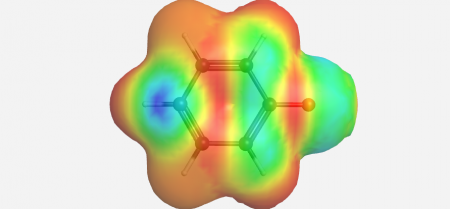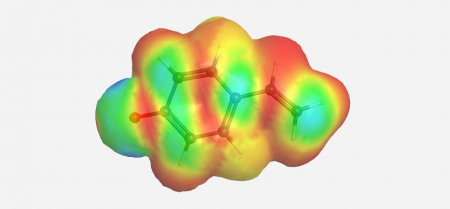Difference between revisions of "Electron Density of Phenoxyl and 4-Vinylphenoxyl"
| Line 13: | Line 13: | ||
||[[File:molecule1esr.png|450px|thumb|Simulated ESR Spectrum of Phenoxyl]] || [[File:Molecule2esr.png|450px|thumb|Simulated ESR Spectrum of 4-Vinylphenoxyl]] | ||[[File:molecule1esr.png|450px|thumb|Simulated ESR Spectrum of Phenoxyl]] || [[File:Molecule2esr.png|450px|thumb|Simulated ESR Spectrum of 4-Vinylphenoxyl]] | ||
|} | |} | ||
| + | ====Hyperfine Coupling Constants==== | ||
| + | {| class="wikitable" | ||
| + | |- | ||
| + | ! Phenoxy !! 4-Vinylphenoxy | ||
| + | |2.65 || 2.33 | ||
| + | |- | ||
| + | | 2.65 || 2.5 | ||
| + | |- | ||
| + | | 6.86 || 2.7 | ||
| + | |- | ||
| + | | 6.68 || 5.35 | ||
| + | |- | ||
| + | | 9.12 || 6.24 | ||
| + | |- | ||
| + | | || 6.72 | ||
| + | |- | ||
| + | | || 7.17 | ||
| + | |||
==Calculations== | ==Calculations== | ||
{| class="wikitable" | {| class="wikitable" | ||
Revision as of 22:20, 15 April 2021
Background
Lignin is a large organic polymer found in plant cell walls. The monomers of lignin can dimerize to form lignan, which has been found to have antimicrobial and anticancer properties. The coupling of these monomers, whether to form lignan or lignin, is highly randomized and can not be easily predicted. However, a better understanding of lignin monomer-like molecules and the electron density of these radicalized species can help us to understand the patterns of coupling.
WebMO/Gaussian and WinSim Data
Both the geometry optimization and molecular orbital calculations were done using the B3YLP theory, accurate: 6-311+G(2d,p) basis set, and a density=current keyword.
Hyperfine Coupling Constants
| Phenoxy | 4-Vinylphenoxy | 2.65 | 2.33 | |||||||
|---|---|---|---|---|---|---|---|---|---|---|
| 2.65 | 2.5 | |||||||||
| 6.86 | 2.7 | |||||||||
| 6.68 | 5.35 | |||||||||
| 9.12 | 6.24 | |||||||||
| 6.72 | ||||||||||
7.17
Calculations
AnalysisLooking at the radical frontier density diagrams, we can determine where a radical would spend it's time. Because blue/green areas are indicative of higher radical density, we see that in both structures the likely location of a radical would be in the ortho and para positions. In terms of lignin monomer coupling, this can lead us to believe that the majority of radicalized lignin will couple at these locations. Better understanding of these mechanisms can be used to further studies of lignin degradation or the coupling of lignin monomers. |





